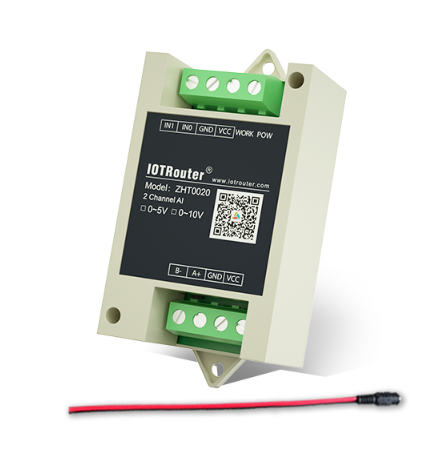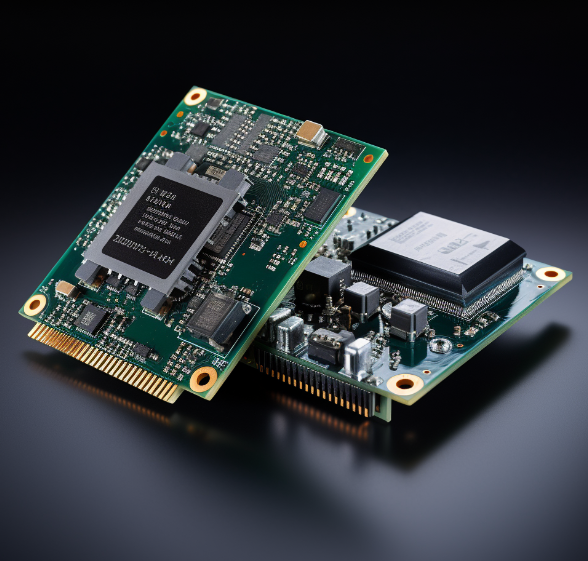IoT modules and chips are high-tech products that everyone is familiar with nowadays. Almost all the electronic devices we use are equipped with chips. At this time, many friends are confused. What is the difference between IoT modules and chips? Woolen cloth? To understand this problem, we need to first understand what chips and IoT modules are and where they are used. Then we can clearly know the differences between IoT modules and chips in what aspects. The following are the details for your reference.

Chip Overview
Chip, also known as microcircuit, microchip, integrated circuit. It refers to a silicon single crystal containing integrated circuits. It is small in size, about the size of a small square biscuit, and is often a part of computers or other electronic products. Chips also have their own unique features. In theory, any semiconductor material film produced using ultrafine particle processing can be called a chip, and there may not necessarily be a circuit inside.
For example, semiconductor material light source chips; such as mechanical equipment chips, such as MEMS mobile phone gyroscopes; or microbial chips such as DNA chips. In communications and information technology, when the scope is limited to silicon integrated circuits, the union of chips and integrated circuits is the “power circuit on the silicon wafer”.
A chipset is a series of interrelated chips. They are interdependent and can play a greater role when combined, such as the CPU and north-south bridge chipset in a computer, and the radio, base and battery in a mobile phone. Management chipset.
What is an IoT chip?
We know that there are many kinds of chips, but to understand the Internet of Things chip, we must first understand what the Internet of Things is. In layman’s terms, it is the Internet technology that connects things. Its core is still the Internet technology, but it is basically evolved. And expansion, not only through people, but through the connection channels between things. The Internet of Things is also widely considered to be the third wave of big data industry development trends, which will drive the transformation of the entire world.
IoT chips are actually still chips in the end, but their functions are more segmented by users and are somewhat different from traditional chips, especially at the product level. Because traditional chip intelligence is used in special areas that require computing solutions, IoT chips are more flexible and are mainly used in daily life, such as windows and doors, household appliances, and even clothes, shoes and hats, etc., which are very technical. The requirements are higher and more emphasis is placed on the purpose of the application field.
Of course, in essence, it is still an integrated circuit, but it is more directional and needs to be used in special environments. For companies, it also puts forward higher requirements, because users of IoT chips require more is a set of solutions, usually more than just a single chip commodity.
What is an IoT module?
The IoT module is one of the most important links in the IoT. It is an important link between the cognitive layer and the transmission layer of the IoT. It is a necessary hardware configuration and cannot be replaced. The data generated by all Internet of Things terminal devices is gathered into computer network equipment through the Internet of Things module, and then remotely monitored through a unified computer.
In the professional field, the Internet of Things module is also called a wireless receiving module. There are many types of wireless receiving modules, such as: LORA control module, RF radio control module, wireless module, wireless control module, etc. The types are very different. So much. The main purpose of each control module is different. The wireless receiving module is usually placed in the object block, connected to the wireless network and pushes and transmits data. To put it bluntly, it is the wireless module that gives all things in the world the ability to connect, communicate, and communicate. Without it, all things in the world would be dead without any intelligence to follow.
We provide a variety of IO interface modules, support multiple protocol standards, are simple and convenient to use, provide complete technical support, and can be widely used in various application scenarios.
Features of IoT modules
- DC10~30V wide voltage;
- Power consumption: 0.4W
- Dual watchdogs, stable operation without downtime for 24 hours;
- Support RS485 communication;
- Communication baud rate: 2400; 4800; 9600; (default 4800 for appearance)
- Communication protocol: Support Modbus RTU protocol;
- 01-FF device addresses can be set, 5-digit address dial switch can set 1-30 address codes;
- 2 analog inputs;
- Support standard Modbus RTU protocol;